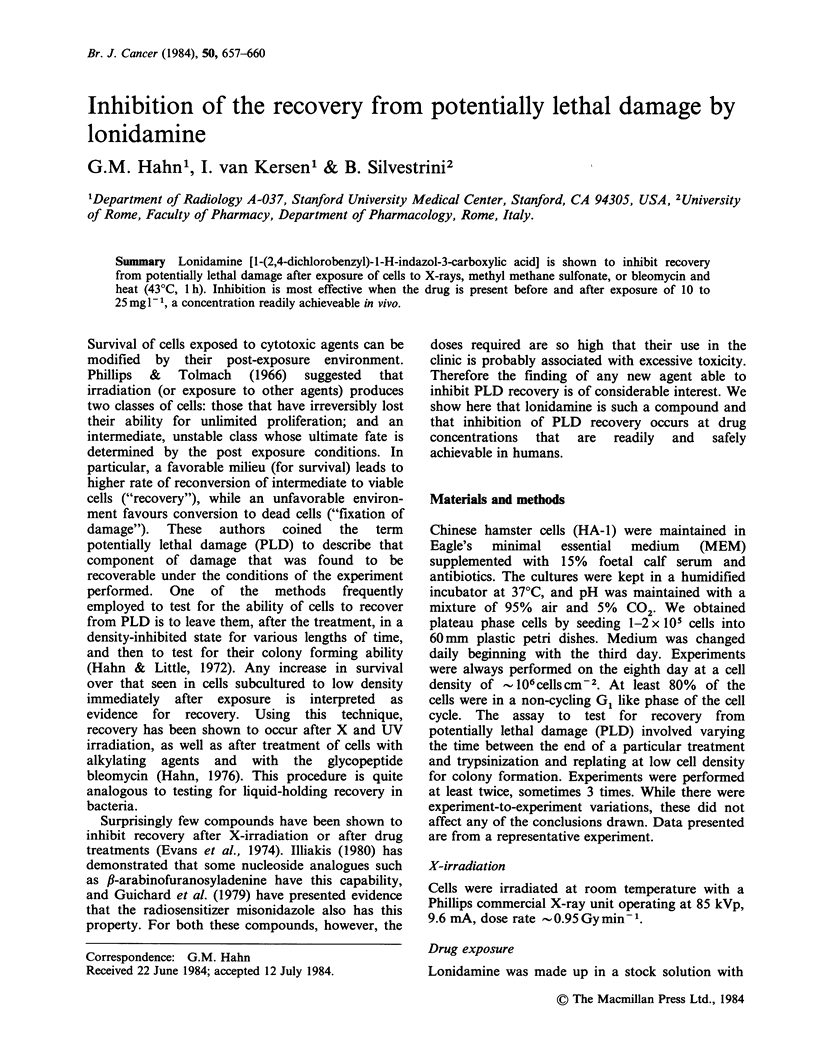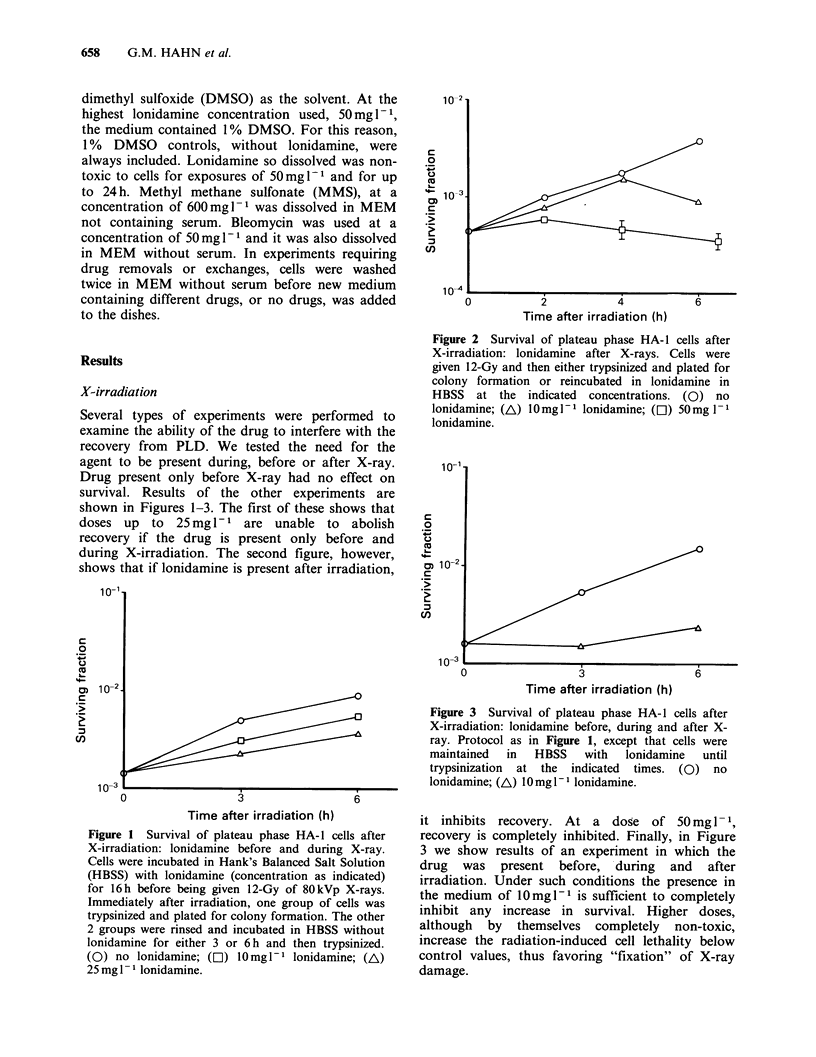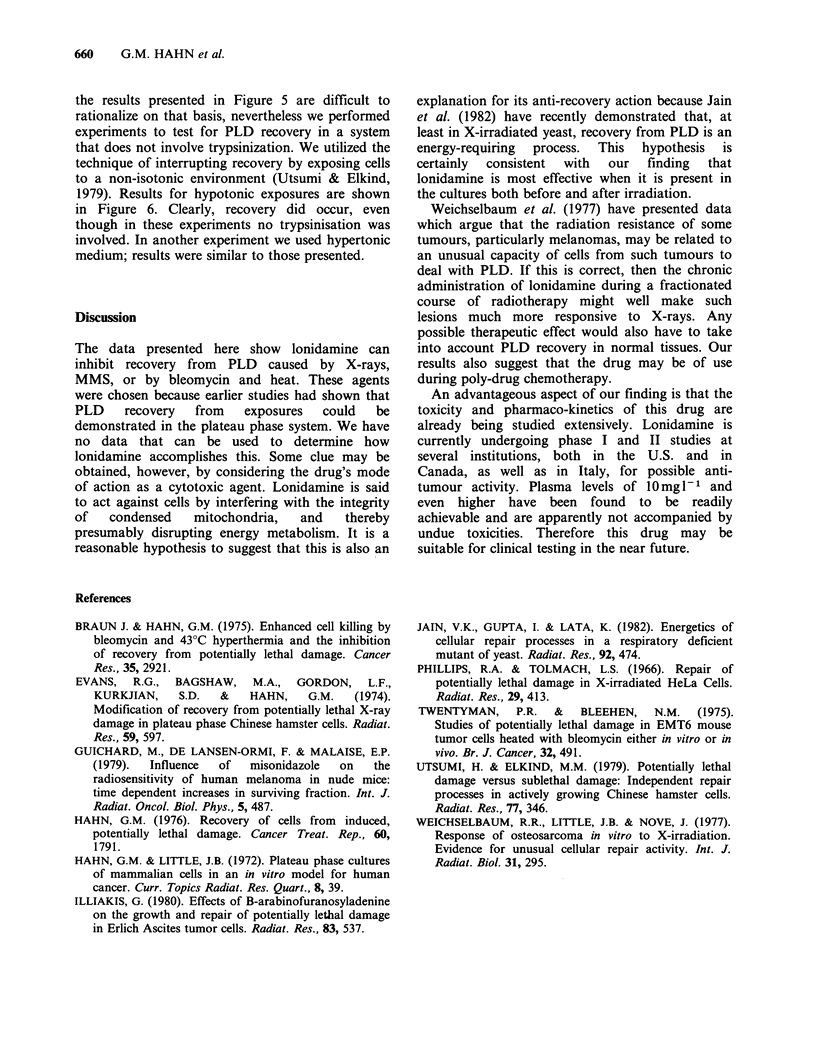Abstract
Lonidamine [1-(2,4-dichlorobenzyl)-1-H-indazol-3-carboxylic acid] is shown to inhibit recovery from potentially lethal damage after exposure of cells to X-rays, methyl methane sulfonate, or bleomycin and heat (43 degrees C, 1h). Inhibition is most effective when the drug is present before and after exposure of 10 to 25 mg l-1, a concentration readily achievable in vivo.
Full text
PDF



Selected References
These references are in PubMed. This may not be the complete list of references from this article.
- Braun J., Hahn G. M. Enhanced cell killing by bleomycin and 43 degrees hyperthermia and the inhibition of recovery from potentially lethal damage. Cancer Res. 1975 Nov;35(11 Pt 1):2921–2927. [PubMed] [Google Scholar]
- Evans R. G., Bagshaw M. A., Gordon L. F., Kurkjian S. D., Hahn G. M. Modification of recovery from potentially lethal x-ray damage in plateau phase Chinese hamster cells. Radiat Res. 1974 Sep;59(3):597–605. [PubMed] [Google Scholar]
- Guichard M., de Langen-Omri F., Malaise E. P. Influence of misonidazole on the radiosensitivity of a human melanoma in nude mice: time-dependent increase in surviving fraction. Int J Radiat Oncol Biol Phys. 1979 Apr;5(4):487–489. doi: 10.1016/0360-3016(79)90811-3. [DOI] [PubMed] [Google Scholar]
- Hahn G. M., Little J. B. Plateau-phase cultures of mammalian cells: an in vitro model for human cancer. Curr Top Radiat Res Q. 1972 Jul;8(1):39–43. [PubMed] [Google Scholar]
- Hahn G. M. Recovery of cells from induced, potentially lethal damage. Cancer Treat Rep. 1976 Dec;60(12):1791–1798. [PubMed] [Google Scholar]
- Iliakis G. Effects of beta-arabinofuranosyladenine on the growth and repair of potentially lethal damage in Ehrilch ascites tumor cells. Radiat Res. 1980 Sep;83(3):537–552. [PubMed] [Google Scholar]
- Phillips R. A., Tolmach L. J. Repair of potentially lethal damage in x-irradiated HeLa cells. Radiat Res. 1966 Nov;29(3):413–432. [PubMed] [Google Scholar]
- Twentyman P. R., Bleehen N. M. Studies of "potentially lethal damage" in EMT6 mouse tumour cells treated with bleomycin either in vitro or in vivo. Br J Cancer. 1975 Oct;32(4):491–501. doi: 10.1038/bjc.1975.251. [DOI] [PMC free article] [PubMed] [Google Scholar]
- Utsumi H., Elkind M. M. Potentially lethal damage versus sublethal damage: independent repair processes in actively growing Chinese hamster cells. Radiat Res. 1979 Feb;77(2):346–360. [PubMed] [Google Scholar]
- Weichselbaum R., Little J. B., Nove J. Response of human osteosarcoma in vitro to irradiation: evidence for unusual cellular repair activity. Int J Radiat Biol Relat Stud Phys Chem Med. 1977 Mar;31(3):295–299. doi: 10.1080/09553007714550351. [DOI] [PubMed] [Google Scholar]
- Wolters H., Konings A. W. Radiation effects on membranes. III. The effect of X irradiation on survival of mammalian cells substituted by polyunsaturated fatty acids. Radiat Res. 1982 Dec;92(3):474–482. [PubMed] [Google Scholar]


